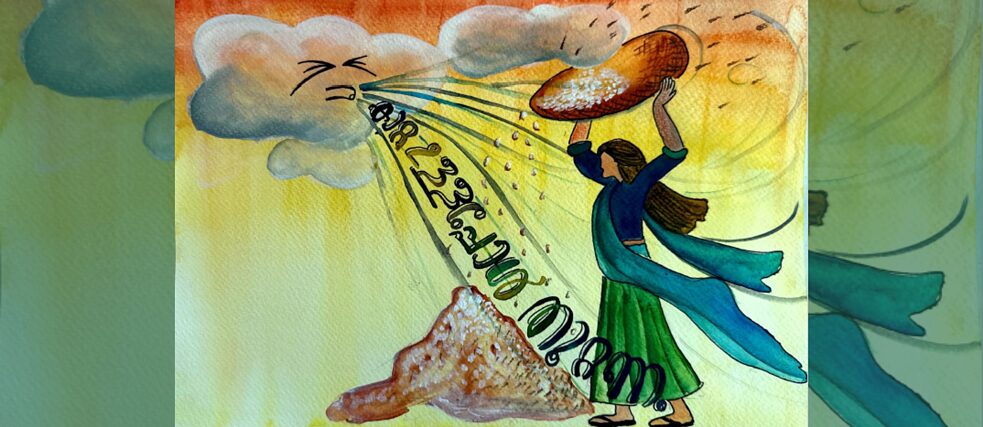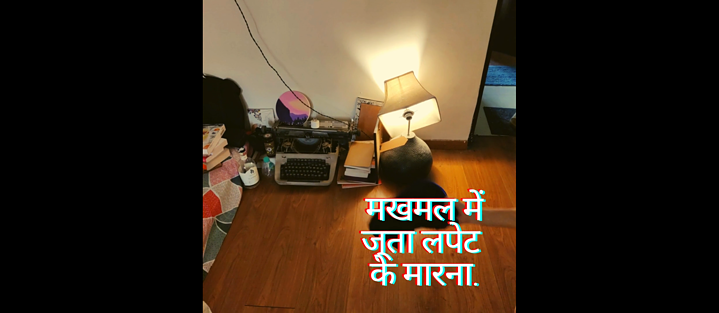Conversation with the Artists
How do NFTs contribute to the support of cultural heritage?
Culture is Ordinary. This is a contentious but landmark phrase by Raymond Williams that emphasises the democratic and shared nature of Culture and reflectively Art as well. The idea of bringing old sayings in lost/vulnerable languages into visual formats is to create a sense of connection with the current society. Today our generation actively communicates through a variety of complex metaphors, layered in pre-existing context and even reclaiming/morphing the communication mediums to our own sensibilities. And what better way to establish that bond with an alien but familiar script/language than through multimedia representations of uncommon but meaningful proverbs!?
With this effort, we are creating a tangible digital modality/way of interacting with a past version of our cultural existence and the people who are a part of this without the barrier of learning everything about that language, like syntax, verbs, tonal modulation etc. And that brings about accessibility and relevance back from the hands of majority languages like Hindi and English into local dialects with their own history.
What are the future plans for this project?
- Academia: We have applied to an academic linguistic conference “Borders: People, Lives and Literature’ in Pune to showcase the project in the form of a short research paper. This conference aims to get a better understanding of what borders mean to us, the advantages, and possible pitfalls of living in a multilingual world and how that interacts on a cognitive as well as a social level.
- Coffeehouses and Libraries: Another place where culture brews over conversations and free discourse is coffeehouses. We plan to have small exhibits of our NFTs once they’re ready at these informal locations to initiate dialogue and interest in these lost languages.
- Focus group studies and surveys with school students: We will also invite native speakers from across the country to collaborate with popular NFT digital illustrators to create distinct and memorable assets to share with the world. And these assets we would take these to schools across the country and talk to young students to understand how familiar they are with these cultural gems and help them engage further with these NFT spaces (one of our teammates Jyotish, along with his research work is also working with the Postal Office and hence we should be able to reach out to a larger network of schools through his collaboration).
Culture is Ordinary. This is a contentious but landmark phrase by Raymond Williams that emphasises the democratic and shared nature of Culture and reflectively Art as well. The idea of bringing old sayings in lost/vulnerable languages into visual formats is to create a sense of connection with the current society. Today our generation actively communicates through a variety of complex metaphors, layered in pre-existing context and even reclaiming/morphing the communication mediums to our own sensibilities. And what better way to establish that bond with an alien but familiar script/language than through multimedia representations of uncommon but meaningful proverbs!?
With this effort, we are creating a tangible digital modality/way of interacting with a past version of our cultural existence and the people who are a part of this without the barrier of learning everything about that language, like syntax, verbs, tonal modulation etc. And that brings about accessibility and relevance back from the hands of majority languages like Hindi and English into local dialects with their own history.
What are the future plans for this project?
- Academia: We have applied to an academic linguistic conference “Borders: People, Lives and Literature’ in Pune to showcase the project in the form of a short research paper. This conference aims to get a better understanding of what borders mean to us, the advantages, and possible pitfalls of living in a multilingual world and how that interacts on a cognitive as well as a social level.
- Coffeehouses and Libraries: Another place where culture brews over conversations and free discourse is coffeehouses. We plan to have small exhibits of our NFTs once they’re ready at these informal locations to initiate dialogue and interest in these lost languages.
- Focus group studies and surveys with school students: We will also invite native speakers from across the country to collaborate with popular NFT digital illustrators to create distinct and memorable assets to share with the world. And these assets we would take these to schools across the country and talk to young students to understand how familiar they are with these cultural gems and help them engage further with these NFT spaces (one of our teammates Jyotish, along with his research work is also working with the Postal Office and hence we should be able to reach out to a larger network of schools through his collaboration).

